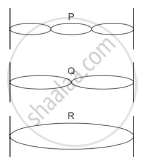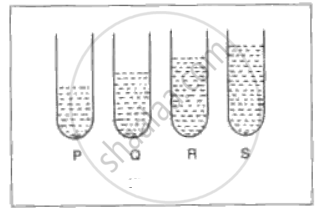Advertisements
Advertisements
Question

The diagram above shows a wire stretched over a sonometer. Stems of two vibrating tuning forks A and Bare touched to the wooden box of the sonometer. It is observed that the paper rider (a small piece of paper folded at the centre) present on the wire flies off when the stem of vibrating tuning fork B is touched to the wooden box but the paper just vibrates when the stem of vibrating tuning fork A is touched to the wooden box.
1) Name the phenomenon when the paper rider just vibrates.
2) Name the phenomenon when the paper rider flies off.
3) Why does the paper rider fly off when the stem of tuning fork B is touched to the box?
Solution
1) Vibration (The frequency of fork is close to the natural frequencies of vibrating wire).
2) Resonance
3) The paper rider flies off because the natural frequency of vibration of wire matches the frequency of the tuning fork.
APPEARS IN
RELATED QUESTIONS
Name the phenomenon involved in tunning a radio set to a particular station
The adjacent diagram shows three different modes of vibrations P, Q and R of the same string.

(i) Which vibration will produce a louder sound and why?
(ii) The sound of which string will have maximum shrillness?
(iii) State the ratio of wavelengths of P and R.
What are forced vibrations?
Describe a simple experiment to illustrate the phenomenon of resonance and explain it.
How do you tune your radio set to a particular station ? Name the phenomenon involved in doing so and define it.
In fig. , P, Q, R and S represent test tubes each of height 20 cm which are filled with water upto heights of 10 cm, 14 cm, 16 cm and 18 cm respectively. If a vibrating tuning fork is placed over the mouth of test tube Q, a loud sound is heard.
(i) Describe the observations with the tubes P, R and S.
(ii) Give the reason for your observation in each case.
(iii) State the principle illustrated by the above experiment.

What do you mean by resonance? When does resonance occur?
State two ways in which resonance differs from forced vibrations.
A string stretched between its ends is made to vibrate by placing the stem of a vibrating tuning fork at its one end. State three ways how you will increase the frequency of note produced by the string.
What do you understand by free (or natural) vibrations?
